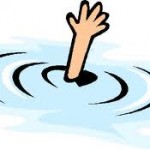Dry Drowning
By Dry Drowning is essentially drowning, but without the body of water as the immediate cause. This can happen anywhere from one to 24 hours after having spent time in a pool or other water source.
Dry Drowning is essentially drowning, but without the body of water as the immediate cause. This can happen anywhere from one to 24 hours after having spent time in a pool or other water source.
What happens is a small amount of water is aspirated into the lungs. This water is either absorbed into the bloodstream causing an imbalance of electrolytes, diluting the blood and causing an abnormal heart rhythm, or it prevents the normal absorption of oxygen into the blood system causing either cardiac arrest or possible brain damage.
Approximately 4,000 people die each year from drowning, of these about 10% to 15% can be classified as dry drowning. This is a significant number especially since high percentages are children.
In most cases of dry drowning, a person’s behavior may seem to be quite normal after they have been in the water. But there are a few signs to look for to help identify if there is a potential problem.
A consistent cough that continues for a half hour or more, shortness of breath, pain in the chest, lethargy or a dramatic change in their normal behavior, such as becoming combative or cranky should prompt you to seek immediate medical attention.
Victims of dry drowning have the best chance of survival by being treated at a medical facility. If the victim loses consciousness and stops breathing, immediately call 9-1-1 and begin CPR by compressing the chest 30 times in a row, then deliver 2 rescue ventilation.
Now that summer is here and we begin to spend more time and activities around water, remember the signs to look for concerning dry drowning. It can happen to adults as well as children. If you are not sure, always fault on the side of caution and have the person checked by a physician. Let’s be safe not sorry.







